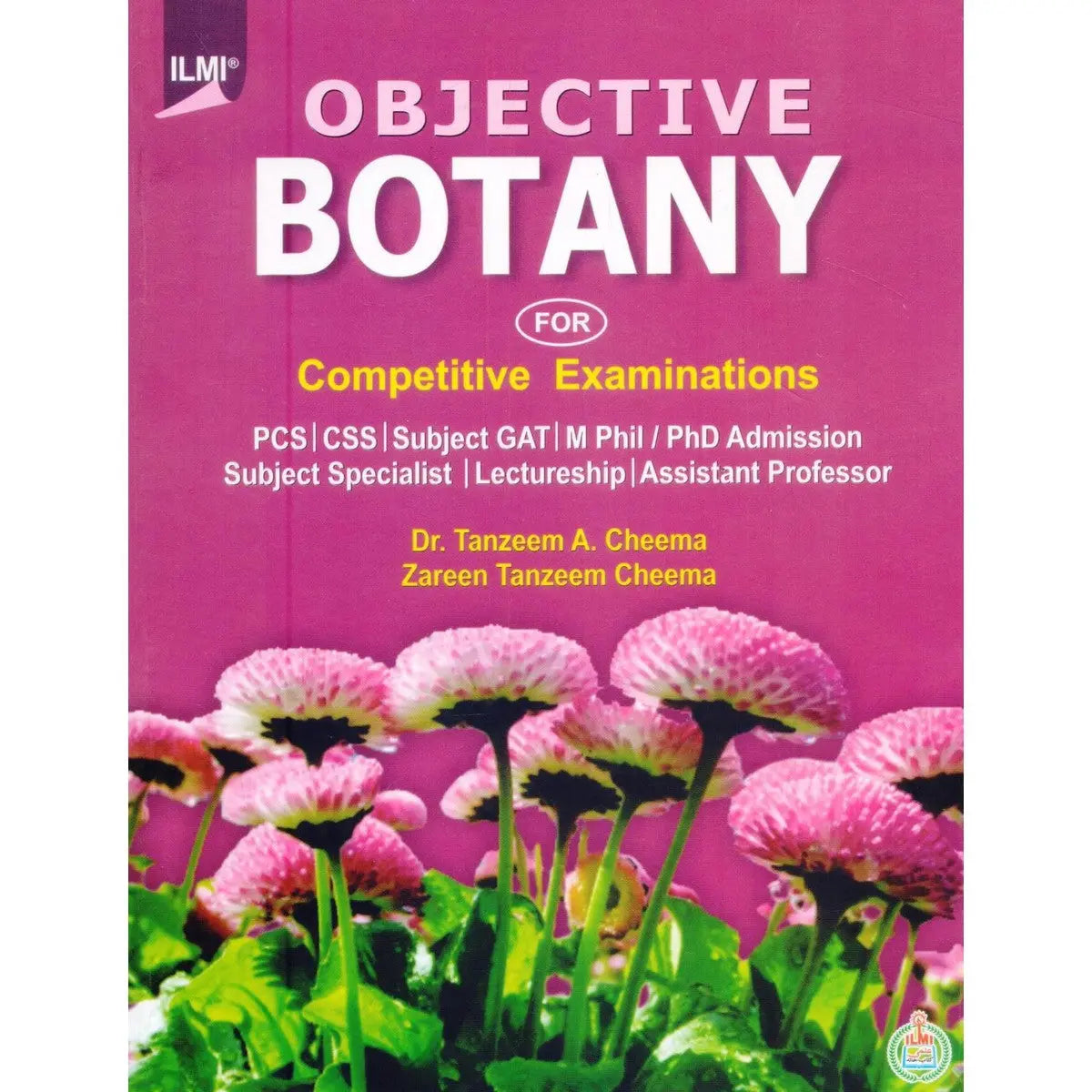CSS Botany 2025 Group 5
CSS Botany Syllabus 2025
This article covers the CSS Botany complete Syllabus 2025.
The syllabus of CSS Botany consists of 10 parts of collective 100 marks.
The examination for CSS Botany is the Group 5 exam for CSS candidates.
CSS Botany Syllabus 2025
Paper (Marks-100)
-
Algae, Fungi and Bryophytes:
- Phycology: Distribution, Classification, Structure, Life History and Economic importance of the main groups of Algae.
- Mycology and Plant Pathology: Structure, Reproduction, Classification and Economic importance of the main groups of Fungi. Diseases of economically important crops and general principles of their control
- Bryology: Structure and reproduction of bryophytes, Evolution of Gametophyte and Sporophyte.
-
Pteridophyte and Gymnosperms:
- General account with special reference to structure & life history
- Affinities of both Pteridophytes and Gymnosperms
- Ontogeny and structure of the seed
- Classification and economic importance of Gymnosperms
-
Anatomy and Embryology:
- Primary and secondary tissues. Meristems. Secondary growth in dicot stem. Anatomy of leaf, stem and root.
- Micro and megasporogenesis, pollination mechanism, fertilization, development of Embryo and Endosperm, Seed dispersal.
-
Taxonomy of Angiosperms:
- Systems of classification.
- Rules of botanical nomenclature. Concepts of speciation.
- Introduction to modern trends in plant taxonomy
- Bio-systematic, chemotaxonomy and numerical taxonomy
- General characters and economic importance of common angiosperm families
-
Plant Physiology:
- Plant water relations, Osmotic Quantities, component potentials of water and their role in transport, water absorption by roots, transpiration. Role of essential mineral elements and their uptake. Plant hormones. Photoperiodism, Vernalization. Dormancy and Seed germination. Enzymes.
- Photosynthesis: Plant pigments, Light reaction, CO2 fixation, Mechanism of photophosphorylation.
- Respiration: Glycolysis, Kreb cycle, Mechanism of oxidative phosphorylation.
-
Ecology:
- Influence of climatic, edaphic and biotic factors on plant growth
- Vegetation sampling techniques
- Concepts of ecosystems and their productivity
- Ecological energetics
- Pyramids (of numbers, biomass and energy), trophic levels, food chains and food webs
- Biogeochemical cycles (Hydrological and Nitrogen)
- Succession
- Causes and reclamation of soil salinity
- Water-logging in Pakistan
- Soil erosion & its control
- Soil conservation methods
- Deforestation
- Biodiversity conservation
- Pollution
-
Cytology:
- Cell cycle, cellular morphology, the chemistry of cell wall and cell membrane, cell to cell communication, plant tissue and cell culture, cell senescence and cell death.
- Ultra-structure of various cell organelles: Mitochondria, Golgi bodies, Endoplasmic reticulum, Plastids, Ribosomes, Glyoxysomes, Vacuoles, Nucleus.
-
Genetics:
- Mendelian Genetics, Multiple Alleles
- Polygenic inheritance
- Gene interaction
- Epistasis and pleiotropy
- Sex-linked inheritance
- Chromosomal aberrations
- Mutations
- DNA repair
-
Evolution:
- Introduction of Evolution
- Evolutionary history
- Evolution of life
- Convergent Evolution, Divergent Evolution & Parallel Evolution
- Natural selection
-
Molecular Biology:
- Nucleic acids
- DNA as hereditary material
- DNA replication
- Transcription
- Genetic code
- Protein synthesis
- Genetic engineering and its application
- Genetically Modified Organisms (GMO)
This is the complete syllabus for preparation of CSS Botany.
The Candidates should prepare thoroughly to succeed in the examination.
Therefore, here are a few suggested books you can buy for better learning about CSS Botany from your favorite Multan Kitab Ghar online bookstore.
Suggested Reading Books for CSS Botany Syllabus 2025
- An Introduction to Plant Diseases by Wheeler, B.E.J.
- An Introduction to Plant Anatomy by Eames, A.G. & Mc. Daniels, L.H
- An Introduction to Embryology of Angiosperms by Maheshveri
- Plant Taxonomy and Biosystematics by Clive, A. Stace
- The Biology of the Algae (2/e) by Round, F.E
- The Structure and Life of Bryophytes by Watson, E.V
- The Morphology of Pteridophytes by Sporne, K.R
- The Morphology of Gymnosperms by Sporne, K.R
- Cytology by Wilson, G.B. & Morrison J.H.
- Diagnosis & Improvement of Saline & Alkali Soils by Richards, L.A. (ed)
- Plant Physiology (2/e) by Frank, B. Salisbury & Cleon W. Ross
- Plant & the Ecosystem by Billings, W.D
- Principles of Genetics by Gardner, E.J
- Morphology of Plants by Bold, Harold, C
- Introduction to Fungi by Webster, J.
- Plant growth and development by Leopold, A.C. & Kriedemann, P.E
- Terrestrial Plant Ecology by Barbour, M.G. & Bark, J.H. Titts, W.D


